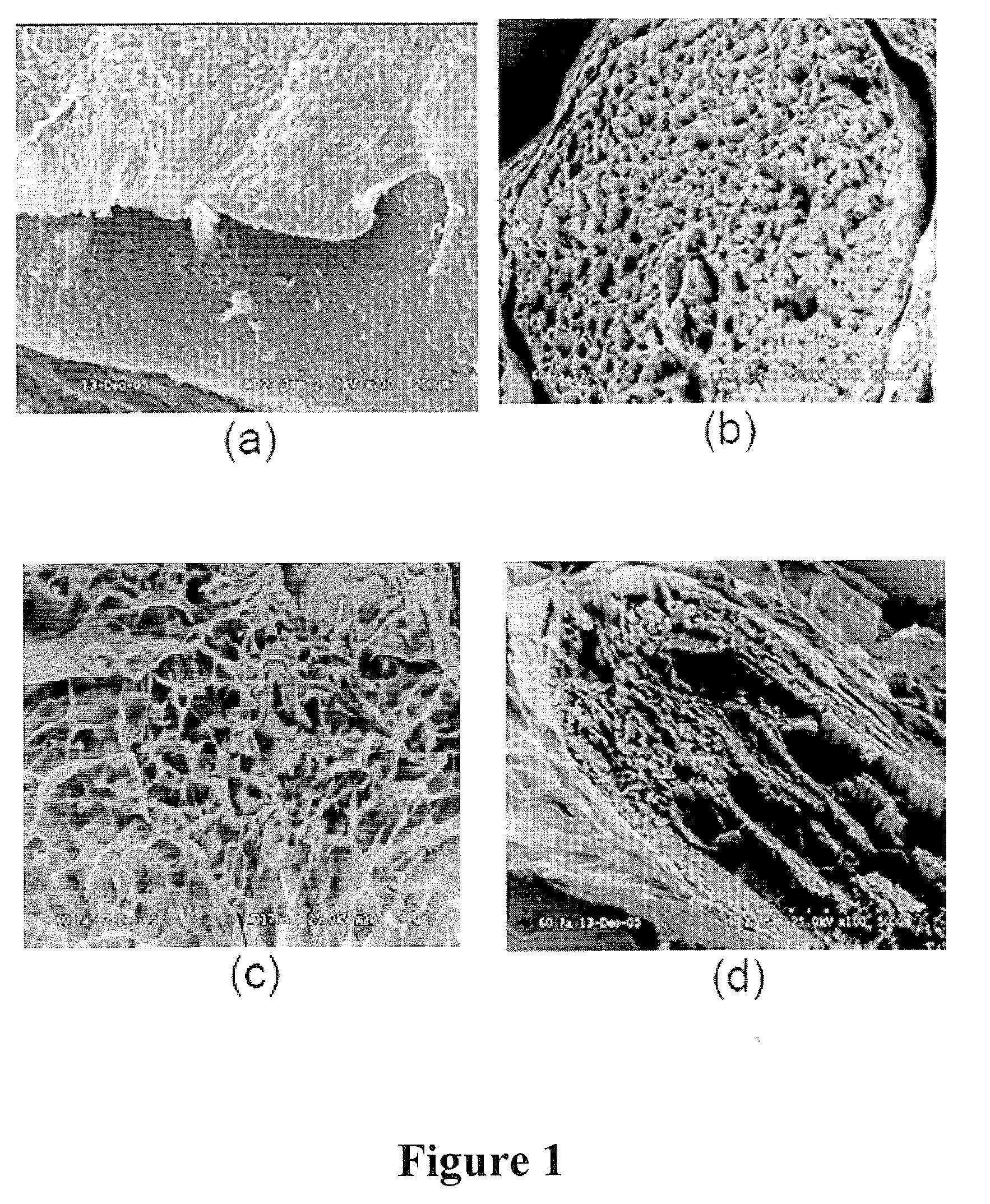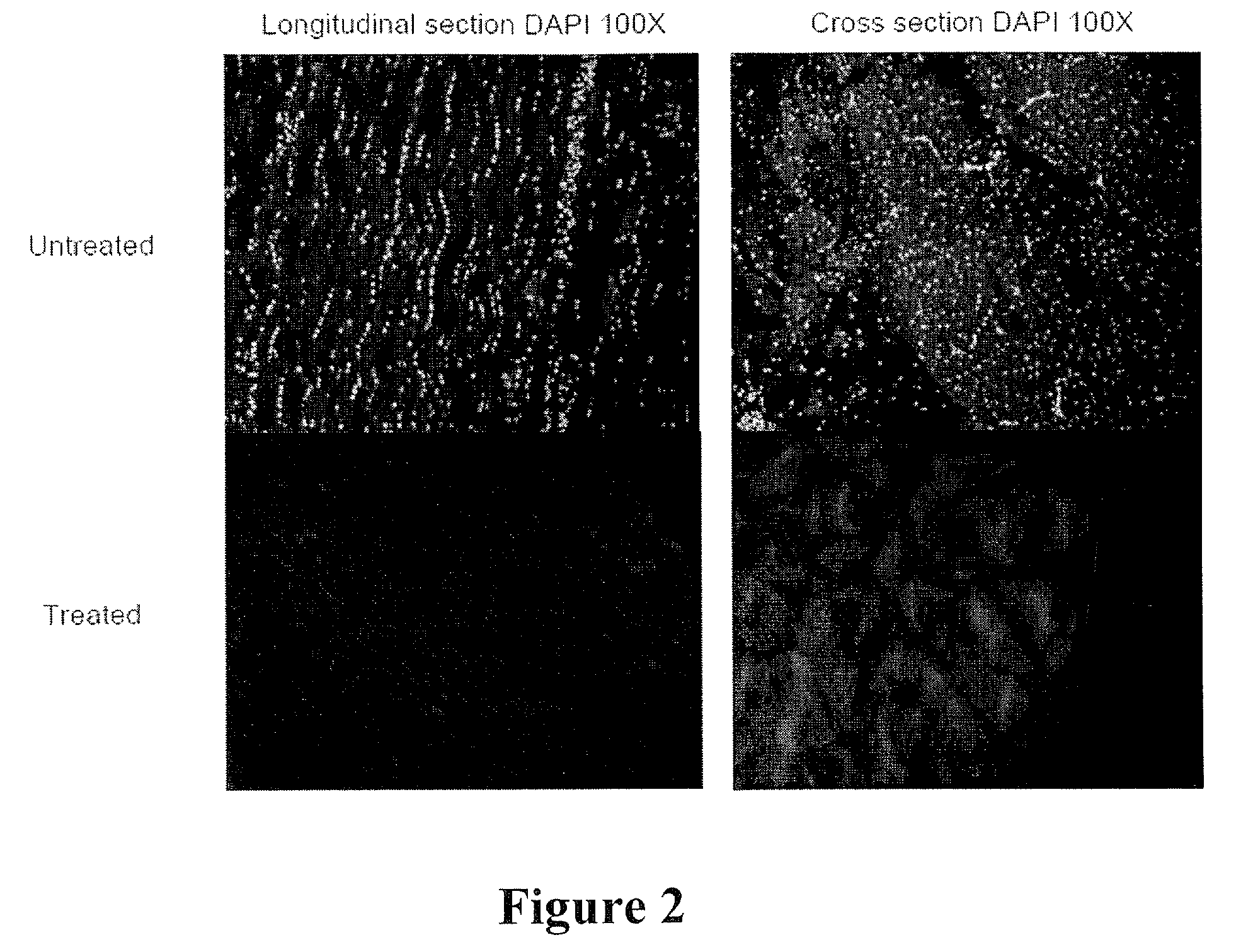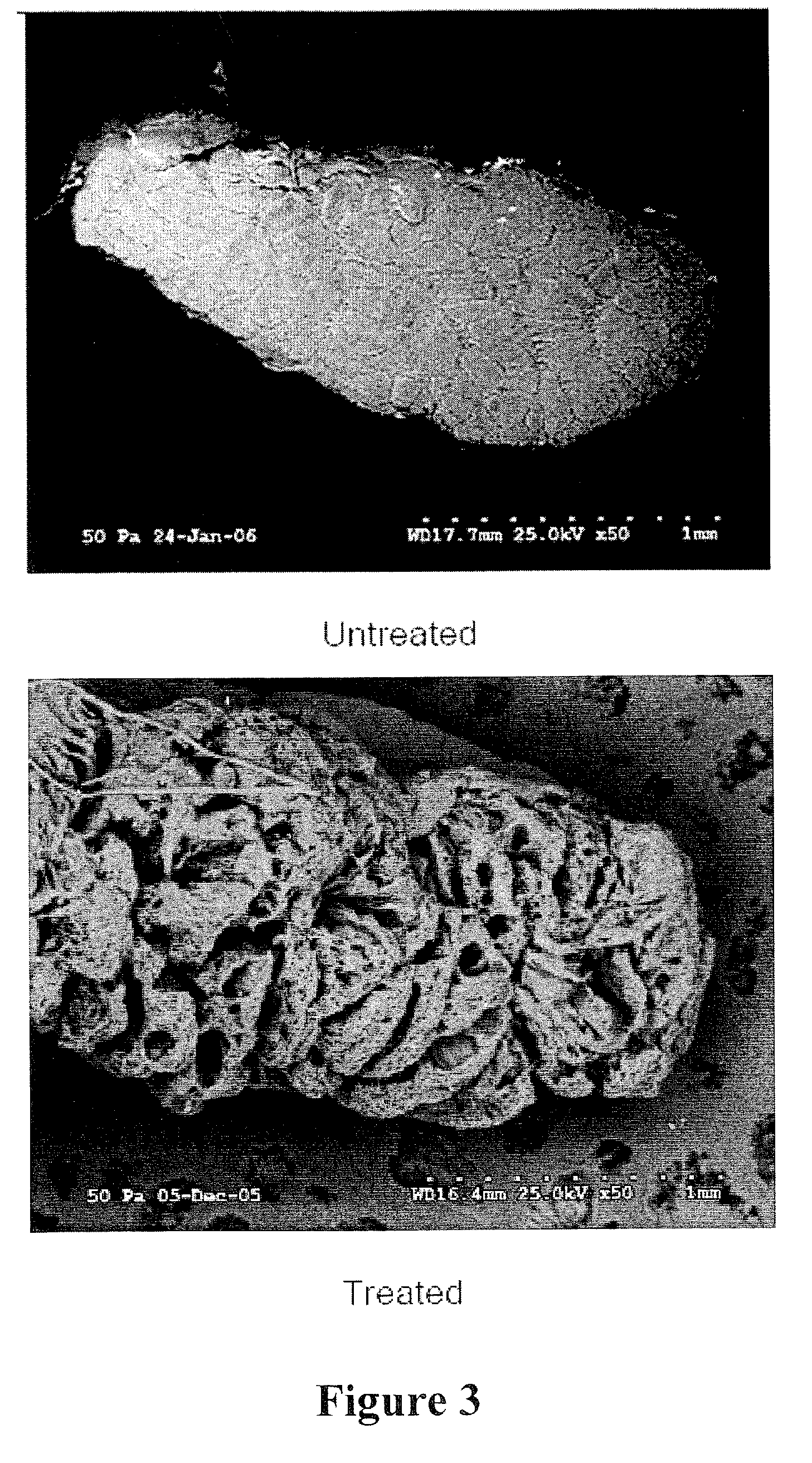Structurally modified acellular tissue engineering scaffolds and methods of production
- Summary
- Abstract
- Description
- Claims
- Application Information
AI Technical Summary
Benefits of technology
Problems solved by technology
Method used
Image
Examples
example 1
Nerve Scaffolds
[0084]Sciatic nerves were harvested from white New Zealand rabbits. The tissue was placed in deionized (DI) water and shaken at 4° C. for 48 hours to break open the cells. Cell fragments were removed by extraction at 4° C. with 0.5% Triton X-100 in 0.05% sodium hydroxide solution for 48 hours. Residual reagents were removed by shaking in DI water at 37° C. for 96 hours. Efficient removal of the cellular material was confirmed by histological, microscopic, and residual DNA analyses. To increase the porosity and interconnectivity, the acellular nerves were treated at 37° C. for 24 hours with peracetic acid at concentrations of 1, 5, and 10 w / v %. Residual oxidant was removed by repeated extractions with DI water. Finally, the bioscaffolds were freeze dried prior to analysis by scanning electron microscopy (SEM).
[0085]The SEM results are summarized in FIG. 1. These data demonstrate the efficacy of oxidant treatment on peripheral nerve bioscaffolds. In cross section, the ...
example 2
Tendon Scaffolds
[0086]The feet of 56 day old Leghorn chickens were provided by Wayne Farms (Dobson, N.C.), placed on ice immediately after receipt, and stored at 4° C. until harvest. The feet were cleaned and disinfected using aseptic techniques. The flexor digitorum profundus (FDP) tendon from the long digit was removed and placed into a sterile, 15 ml conical tube (Becton Dickinson, Bedford, Mass.).
[0087]A. Preparation of Decellularized / Oxidized FDP Tendon Scaffolds. Immediately after harvest, FDP tendons were transferred under aseptic conditions from 15 ml conical tubes to individual clean, autoclaved, 100 ml glass, screw-top bottles (Gibco, Grand Island, N.Y.). 100 ml of DNase-free / RNase-free, distilled water (Gibco) was added to each sample. The bottle was placed onto a rotating shaker (Barnstead MaxQ400, Dubuque, Iowa) at 200 rpm, 37° C., for 24 hours. After 24 hours, the water was discarded and the cycle was repeated. At the conclusion of the second cycle, the water was disca...
example 3
Tendon Scaffolds
[0103]Experiments with the human Achilles tendon have produced similar results as those reported in Example 2.
[0104]A. Preparation of Decellularized / Oxidized Achilles-derived Tendon Scaffolds. Freeze-dried human Achilles tendon allografts from multiple donors were provided and stored at 25° C. until use. Freeze-dried human Achilles tendon allografts were transferred under aseptic conditions to individual clean, autoclaved, 1000 ml glass flasks. 1000 ml of DNase-free / RNase-free, distilled water (Gibco) was added to each sample. The flask was placed onto a rotating shaker (Barnstead MaxQ400, Dubuque, Iowa) at 200 rpm, 37° C., for 24 hours. After 24 hours, the water was discarded and the cycle was repeated. At the conclusion of the second cycle, the water was discarded and 500 ml of 0.05% trypsin-EDTA (Gibco) was added. The sample was placed onto the rotating shaker at 200 rpm, 37° C. for 1 hour. At the end of the cycle, the trypsin solution was discarded and 500 ml of ...
PUM
 Login to View More
Login to View More Abstract
Description
Claims
Application Information
 Login to View More
Login to View More - R&D
- Intellectual Property
- Life Sciences
- Materials
- Tech Scout
- Unparalleled Data Quality
- Higher Quality Content
- 60% Fewer Hallucinations
Browse by: Latest US Patents, China's latest patents, Technical Efficacy Thesaurus, Application Domain, Technology Topic, Popular Technical Reports.
© 2025 PatSnap. All rights reserved.Legal|Privacy policy|Modern Slavery Act Transparency Statement|Sitemap|About US| Contact US: help@patsnap.com



